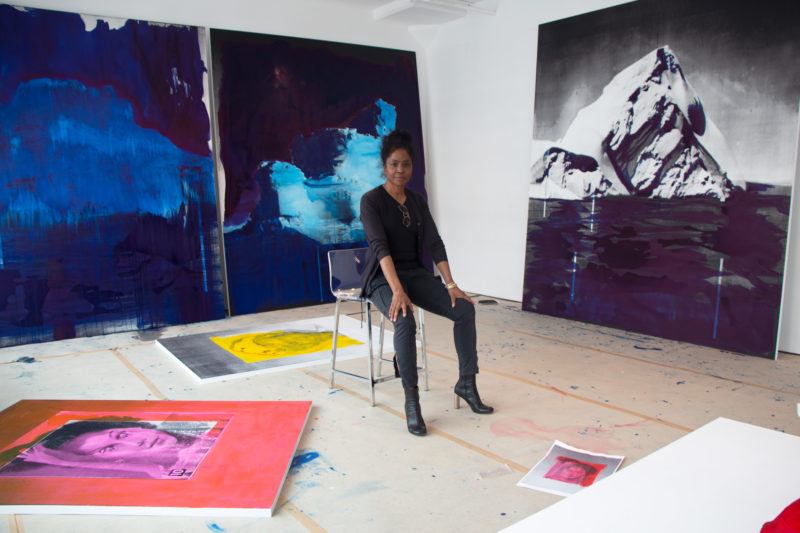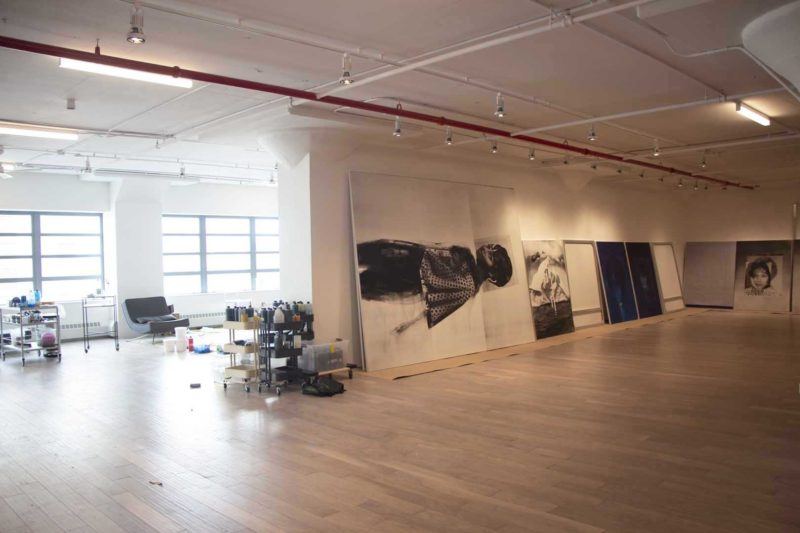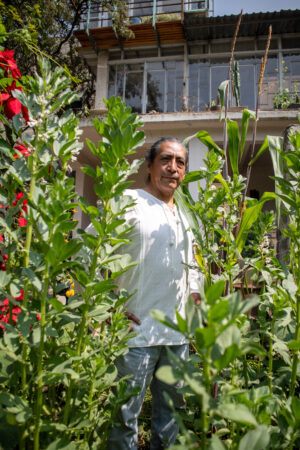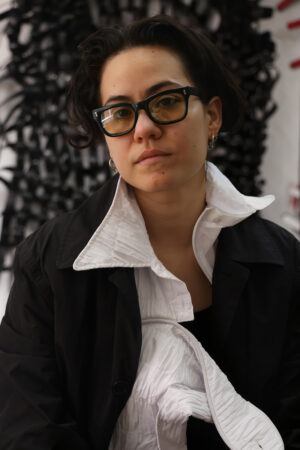

In the Studio
Lorna Simpson on weaving literature into her visual practice and the artists inspiring her today.



Art21You’re well known for collage, photography, and film, but this is a show of paintings. Did your process vary at all in creating this body of work?
Lorna Simpson In some ways, but these mediums do use a lot of the same techniques. I’ve worked with Luther Davis of BRT Printshop for years, who does my silk screening. Having photographic images silkscreened on different surfaces is this uncanny thread that happens through my work. For this show, I constructed images from turn-of-the-century photographs. Expeditions of snow-capped mountains or glaciers or ice formations that probably no longer exist, or could be gone in a few years. But for me, the process by which my work gets made, regardless of the medium, is very similar.
Do you enjoy the challenge of working with various mediums?
First, the idea comes to me, and then what medium to present those ideas. I’ve always felt like it’s nice to challenge myself. Most often I would say there’s a certain amount of risk and uncertainty involved, and I’m comfortable with that. We’re sitting in a room with fifteen different paintings and I have a sense of the series now, but the year and a half of working up to it is unclear, so you just start where you start. These vistas in the blue paintings demand a certain scale in order to replicate grand landscapes. It just seems appropriate in terms of the scale and again this kind of imaginary horizon lines that appear.
Your affinity for literature is often woven into your works. Strands of text creep into the Darkening series. What inspired this practice?
I have a love for literature and writing and I can’t ignore that part of myself. During my training in art school in New York, photographer Duane Michals was like a heretic. And I just thought, “Really? That’s not that absurd.” But in the way it was taught, he was an outlier. In order to be authentic to my own experience, there was a need for me to reconcile these things. I wasn’t so worried about being good, or if it would make sense, but not being afraid of just creating things and not being afraid of criticism.
How do you feel about your work being compared to other artists who work with portraiture and text, namely Barbara Kruger and Cindy Sherman?
Not to be moralistic about it, but by the time I turned eighteen years old, there was no way that I couldn’t understand race in America and the complexity of how imagery is used. Maybe it’s just me—my family’s relationship to politics from the ’60s and their interest in literature which then also fell to me—I read about different cultures, not only my own. I don’t think my work makes assumptions about the spectacle of race and what a female body is. Barbara Kruger plays with words and meanings that suggest aggression, oppression and power, while Cindy’s work kind of takes whiteness for granted to a certain extent; a universalism in the way that she navigates history and time. It’s undeniable that the way you grow up, and the realities of living in America, influences how an artist organizes themselves in and around race, identity, and sexuality.
As a New York-native, how do you feel about artists trying to jump-start their career in the five boroughs today?
I will always believe New York is an amazing playground. It was a simpler time; being able to find an art space or get a quasi-corporate job. I would work for four to six months at a secretarial or graphic design job, but that just became so boring and tedious, so I would quit. I’d have that money saved and work on my art, that was my cycle of working. Brooklyn was affordable then; it’d be very expensive to start now. So I do see a difference of accessibility of being able to live and work in New York.
For me, it was also really important to see what my friends were doing in the public sphere, and getting their work out into the world. I found myself in a network of people who had a vision of what they were doing, and these were serious pursuits. I had an internship at the Studio Museum in Harlem as an arts education intern at the same time as Kellie Jones, who had an internship in curatorial department, and later on, I met [Studio Museum director and chief curator] Thelma Golden. Before the release of She’s Gotta Have It, I met Spike Lee. This community of people were all working in different ways and making something a bit different that was reflective of the time that we were living in.
Today, New York feels much more prohibitive, but still incredibly vibrant. The cost to go to a museum and other institutions are restrictive, and free admission or subsidized admission would allow a broader age of economic and cultural groups to feel welcomed into these public institutions—this is really important.
This city has always been equally challenging as it is inspiring. That said, are there any artists that have inspired you recently?
Whose work do I find inspiring? Okay, that’s always hard because there are so many. Kevin Beasley, a young artist who had a show at the Whitney, was the last thing that I saw that was really amazing. It was this industrial age cotton gin motor that he had contained in a soundproof box, and the recorded sounds of it in motion, was then piped into another gallery. It must have taken him forever to find a cotton gin that worked—the history of the object—but also the intensity of its sound, it was quite an amazing piece. It was so brilliant, you kind of go, “Oh god that’s a good idea.”



